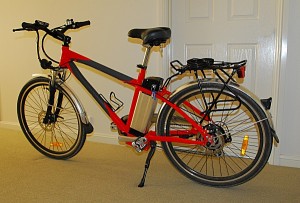You Can Help AutoSpeed Grow!
AutoSpeed was launched way back in 1998 – a grand venture in what was then the near-new medium of the Web.
Unlike many other contemporary modified car and car technology websites, AutoSpeed has always been a commercial enterprise – paying staff members to not only prepare editorial content (words and pics) but also for layout and web hosting.
Over the 12 years, we’ve used a variety of financial models: from generating income by advertising revenue alone, through to paid member subscriptions – and then back to advertising revenue.
And of course, over that time the Web has also changed enormously.
Once, the idea of paying for content was seen (by some) as ludicrous – in fact, wasn’t it the whole idea of the Web that things should be available free? But over time, the idea that quality content doesn’t cost anything to produce has come to be realised as the mirage it is. Someone has to pay… and the revenue generated by web advertising alone is very unlikely to be sufficient to generate good content.
So what’s this about a cost to generate content? If you want good writers and photographers to produce quality material over a long period, they need to be paid. To put this another way, if those people are competent professionals, they’ll be able to earn decent money elsewhere – so why would they do it for nothing?
In fact, taking an average over widely differing research costs, and word and pic counts, a typical new AutoSpeed article costs about AUD$500 to produce.
In recent times we’ve dropped new content from two new articles a week to one new article per fortnight. We’ve also been running more material from other published sources. The reason for this decrease in new content is simple – not enough revenue.
The corollary is also pretty straightforward – more revenue equals more new articles.
But let’s be clear. AutoSpeed is not about to disappear from your screens. Our advertising revenue pays for hosting costs, and our readership numbers remain very strong. This is no ‘save AutoSpeed’ campaign, where if you don’t make a donation we’re gone.
So what is this all about? Simple – if you chose to make a financial donation to AutoSpeed, we’ll be able to produce more new content. For example, we could return to the format of one new article per week – or even two new articles per week.
If you’ve enjoyed AutoSpeed for a long time, or even if you’ve more recently been attracted to reading our content, consider making a donation. The amount you donate is up to you – but you can be sure that money will go directly to producing new content.
Go here to contribute.

 Julian Edgar, 50, has been writing about car modification and automotive technology for nearly 25 years. He has owned cars with two, three, four, five, six and eight cylinders; single turbo, twin turbo, supercharged, diesel and hybrid electric drivelines. He lists his transport interests as turbocharging, aerodynamics, suspension design and human-powered vehicles.
Julian Edgar, 50, has been writing about car modification and automotive technology for nearly 25 years. He has owned cars with two, three, four, five, six and eight cylinders; single turbo, twin turbo, supercharged, diesel and hybrid electric drivelines. He lists his transport interests as turbocharging, aerodynamics, suspension design and human-powered vehicles.

